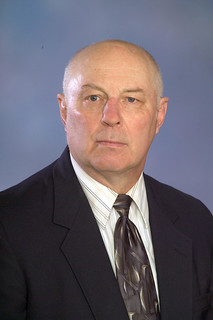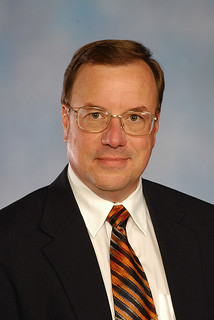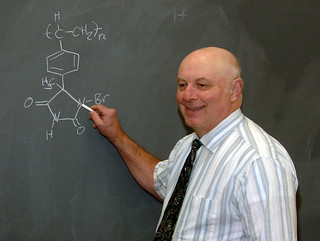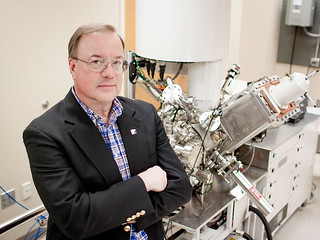Auburn University professors named Fellows of National Academy of Inventors
Article body
Two Auburn University professors have been named Fellows of the National Academy of Inventors, the academy announced today.
Bruce Tatarchuk, chemical engineering professor in the Samuel Ginn College of Engineering, and S.D. "Dave" Worley, professor emeritus of chemistry and biochemistry in the College of Sciences and Mathematics, will be inducted March 20 during the NAI annual conference at the California Institute of Technology in Pasadena. Andrew Faile, the U.S. Patent and Trademark Office Deputy Commissioner for Patent Operations, will give the keynote address for the induction ceremony.
"Drs. Worley and Tatarchuk join a very prestigious group of innovators that includes Nobel Laureates and science medal winners as new Fellows in the National Academy of Inventors," said John Weete, executive director of the Auburn Research and Technology Foundation and member of the NAI board of directors.
"There is an increasing expectation at the federal level that discoveries in science and engineering should promote economic development and benefit society through commercialization. The work of Drs. Worley and Tatarchuk are examples of meeting this expectation. They should be congratulated on their achievements as inventors and entrepreneurs."
The naming of Tatarchuk and Worley brings the total number of NAI Fellows to 414, representing more than 150 research universities and governmental and nonprofit research institutions. The Auburn recipients are among only 170 national awardees this year; they were nominated by their peers for outstanding contributions to innovation in areas such as patents and licensing, innovative discovery and technology, significant impact on society, and support and enhancement of innovation. Fellows are elected by a 17-member selection committee.
Tatarchuk is director of Auburn's Microfibrous Materials Manufacturing Center and was recently honored with Engineering's Charles E. Gavin III Endowed Chair. His work focuses on chemical interactions occurring at solid surfaces. He has pioneered the design and development of microfibrous entrapped sorbents, catalysts and electrocatalysts which facilitate extremely high levels of chemical reactivity. His discoveries have resulted in 12 U.S. patents and a large number of foreign patents. This work has led to the commercialization of numerous products, including double layer capacitors, advanced batteries, polishing sorbents, heterogeneous catalysts, filters, and thermal and electrical conduction aids. These products impact hundreds of millions of users each year. He a 2001 co-founder of IntraMicron Inc., a Delaware corporation and small business operating in Auburn, Alabama.
He began his career at Auburn in 1982 after earning a bachelor's degree in chemical engineering from the University of Illinois in 1976 and a doctorate in chemical engineering from the University of Wisconsin in 1981. He won Auburn's Creative Research Award in 2003.
Worley's research is leading to safer drinking water in developing nations through advanced, longer-lasting water filters. The filters contain polystyrene beads that hold oxidative chlorine or bromine atoms, germ-killing agents, for long periods of time and can be easily refurbished – the results of Worley's N-halamine chemistry. He received 40 patents in the course of discovering this process, which has been commercialized by Seattle-based HaloSource Inc. His research also involves work to bridge the gap between high-vacuum surface science and industrial catalytic chemistry. The work has led to many publications in physical chemistry and surface science journals.
He earned a bachelor's degree in chemistry from Auburn in 1964 and a doctorate in chemistry from the University of Texas at Austin in 1969. He returned to Auburn as a faculty member in 1974. In 2006 he won Auburn's Creative Research and Scholarship Award.
"Professors Worley and Tatarchuk exemplify the high level of scientific excellence and creativity among the Auburn faculty, and they are recognized leaders both in their fields of research and within the university," said Jan Dowdle Thornton, director of Auburn University's Office of Technology Transfer.
"It's noteworthy that both have been influential teachers and mentors to students and postdoctoral fellows over the years, while achieving great success in their research and commercializing their results."
Related Media
Media interested in this story can contact Communications Director Preston Sparks at (334) 844-9999 or preston.sparks@auburn.edu.
Auburn University is a nationally ranked land grant institution recognized for its commitment to world-class scholarship, interdisciplinary research with an elite, top-tier Carnegie R1 classification, life-changing outreach with Carnegie’s Community Engagement designation and an undergraduate education experience second to none. Auburn is home to more than 30,000 students, and its faculty and research partners collaborate to develop and deliver meaningful scholarship, science and technology-based advancements that meet pressing regional, national and global needs. Auburn’s commitment to active student engagement, professional success and public/private partnership drives a growing reputation for outreach and extension that delivers broad economic, health and societal impact.








